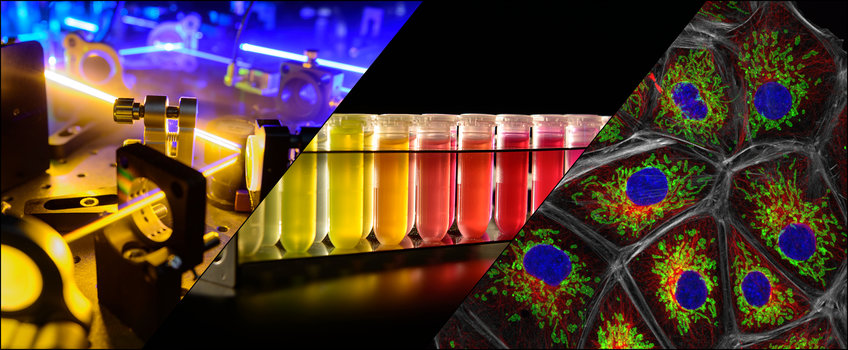Structure and Dynamics of Mitochondria
Mitochondria have a central role in the energy metabolism of all eukaryotic cells and are important for many cellular and developmental processes. Mitochondrial dysfunctions are associated with numerous severe diseases, including several devastating neurodegenerative diseases. We are concentrating on two research areas that are fundamental for the maintenance of mitochondrial structure and function. First, we investigate the molecular mechanisms that maintain the structural organization of the inner membrane. Second, we investigate the degree, the functional relevance, and the molecular causes of the heterogeneity of mitochondrial structure and function in healthy and challenged single cells. Because mitochondria are very small organelles, we are using – besides molecular and biochemical tools – in particular advanced super-resolution light microscopy.
Our second interest is, as part of a research initiative of the Department of NanoBiophotonics, the investigation and improvement of reversibly switchable fluorescent proteins. These proteins are reversibly switchable between a non-fluorescent and a fluorescent state by light. With their unique properties, they open up numerous potential applications in microscopy and cell biology.
Press releases and research news
In an initial application of the powerful MINFLUX nanoscopy technique to cell biology, researchers led by Stefan Hell and Stefan Jakobs have now optically dissected the distribution of individual proteins in a ~ 20-nanometer-sized protein cluster within a cellular organelle in 3D using multiple colors. MINFLUX nanoscopy thus proves to be an extremely powerful tool to find out if and how proteins group inside the cell, at the length scale of the proteins themselves.
more
The power plants of our cell – the mitochondria – consist of a smooth outer membrane and a highly folded inner membrane. However, what shapes the inner membrane remains a mystery. A team of scientists from Göttingen has now used state-of-the-art microscopy methods to gain new insights into how the inner membrane is folded. This could help to better understand some diseases of the nervous system and the muscular apparatus.
more
In this year's competition for funding from the European Research Council, two Göttingen scientists were successful: Stefan Jakobs, research group leader at the institute and Professor at the Department of Neurology of the University Medical Center, and Theofanis Kitsopoulos, researcher at the MPI and the University of Göttingen, will receive an ERC Advanced Grant endowed with approximately 2.5 million euros each.
more
Every day, billions of cells in our body kill themselves. This is vital to us. Responsible for this self-induced cell death are the power houses of living cells, the mitochondria. When their surfaces become permeable the cell dies. Göttingen scientists have shown for the first time that the so-called Bax proteins form annular structures on the mitochondria. These rings could act as pores and so make the mitochondrial surface permeable.
more




